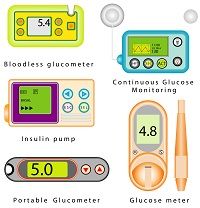Article
Glucose Monitoring Using Novel Flexible Temporary Tattoo Device
Author(s):
A prototype model of a temporary tattoo like device is able to accurately monitor glucose levels, according to research published in Analytical Chemistry.

Glucose monitoring can be done using a tool similar to a flexible or temporary tattoo, according to findings published in the American Chemical Society journal Analytical Chemistry.
Researchers from the University of California San Diego have presented a proof of concept demonstration of a temporary tattoo based device that would function as a noninvasive glucose monitor. The sensor is a flexible tattoo based epidermal diagnostic device, the authors wrote, that uses reverse iontophoretic extraction of interstitial glucose in combination with an enzyme based amperometric biosensor. The need for a device like this was prominent, as current glucose level monitors are invasive and generally involve a finger prick; this model, however, rests on the skin.
“This preliminary investigation indicates that the tattoo based iontophoresis sensor platform holds considerable promise for efficient diabetes management and can be extended toward noninvasive monitoring of other physiologically relevant analytes present in the interstitial fluid,” the authors explained.
The device would be applied to human subjects and monitor variations in glycemic levels before and after food consumptions in upcoming trials. Experiments demonstrate the importance of the reverse iontophoresis operation and reinforce the sensor specificity, the authors said.
So far, the tattoo device has been tested on 7 healthy volunteers and it was determined the device could accurately determine glucose levels, noted a press release. Kidney disease and diabetes management are the targeted diseases the researchers hope this tattoo device could assist patients with.
Previous research into this topic suggested evidence of the tattoo’s sensor response toward physiologically relevant glucose levels with not statistically significant interference from commonly existing electroactive species. Another device created for glucose monitoring previously was a wristband. Researchers noticed it caused skin irritation in patients and was later discontinued, which also motivated the tattoo researchers to find a better method.




